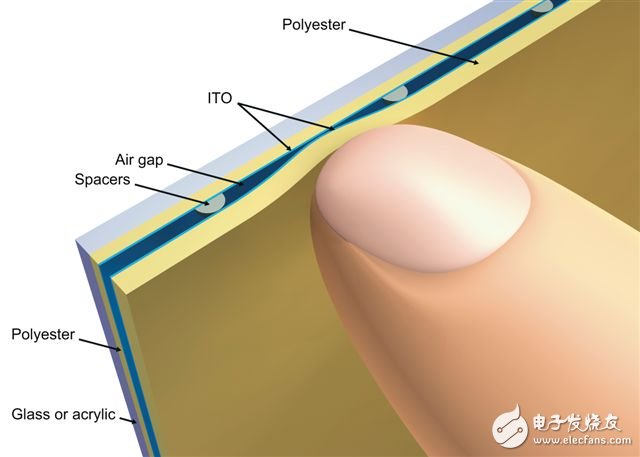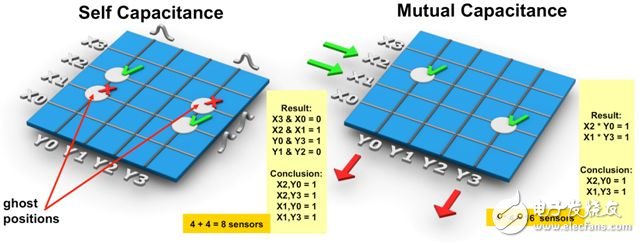In the hot download of the " touch technology special issue " of the electronic enthusiast network in October, how can you lack it!
Smartphones and tablets are now everywhere. Businesses and consumers are using them in large numbers, and this year there are many models of tablets. Touch screen applications that were first introduced to small-sized devices a few years ago are rapidly spreading to large-sized devices. For computing and electronic device manufacturers, this new market represents not only the latest consumer boom, but also a fundamental shift in how people interact with information and the computing hardware that provides the information. The growth of this market has triggered a series of actions by device manufacturers who are actively porting touch screen technology to large-scale hardware devices.
Still, the new mode of interacting with small screens and simple touch applications to primarily use hands and fingers to interact with full-size computers is not necessarily a direct transition. Manufacturers need to rethink the way consumers use touch screens to meet more demanding new requirements. Most importantly, the transition to larger screens has made multi-touch capabilities indispensable. For example, a smaller mobile phone display can rely on a one-finger touch to control and select handset operations. However, while a few finger strokes are sufficient on a 5-inch screen, how many strokes do you need on a 12-inch or 40-inch device, or when multiple users interact with both hands? What new and popular applications for large-sized devices will appear? How do manufacturers ensure that their devices support these applications?
The basic principle of touch screen technology
The basic principles of today's touchscreens stem from the touch technology of buttons, scrolls, and sliders that were used early (and are still heavily used today). Over the years, the use of mechanical switches has continued to decline, and control technologies such as resistive membrane switches, piezoelectric switches, and capacitive sensing-based touch technologies have led the way.
Resistive touch technology
Resistive touch technology includes a flexible top layer, an insulating spacer and an underlying substrate. The upper surface of the top layer is printed with a pattern, and the lower surface is printed with a conductive pattern of conductive ink using silver or carbon. A corresponding conductive pattern is printed on the substrate. The individual conductive layers are pressed together through the holes in the spacer to form a single contact. To create tactile feedback, a metal or plastic dome under the overlay can be used to make a "beep" when a switching action occurs, and an embossing on the top layer can be used to direct the user's finger to the "best contact" of each switch. ". Despite this, membrane switches have many drawbacks. First of all, they are not really touch switches. Physical contact and physical stress are required to form a contact.
Similarly, a resistive touch screen also contains multiple layers, the most important of which are two thin conductive layers with small gaps. Pressing a point on the outer surface of the screen will cause the two metal layers to be connected at that point, which is equivalent to a voltage divider that will cause a change in current that will be recorded as a touch operation and sent Go to the controller for processing.

Figure 1 – Structure of a resistive touch screen
Resistive touch screens are favored by the market because of their low production cost and excellent stylus capabilities, with many supporters, especially for applications that use Asian characters. However, as multi-touch applications are becoming a trend, resistive technology does not support multi-touch. In addition, due to the need for multiple layers or "stacks" that affect optical performance, the display is less visible in sunlight due to reflection, and the brightness of the display is greatly reduced. Resistive touch screens are also susceptible to scratches, moisture and dust, due to the need for a soft outer layer to make contact with the stylus (or any object in contact with it).
Projected capacitive touch technology
A technology that competes with resistive touch technology uses a projected capacitive field. The technology quickly won the user's support because it has a hard, "smooth", excellent-looking outer surface and, from a practical point of view, is completely sealed to prevent ingress of dust and moisture. In response to consumer demand, manufacturers have responded quickly, and most manufacturers seem to have taken capacitive touch technology as the way forward. The technique works by: When an object (such as a finger) approaches or touches the surface of the screen, the system measures small changes in the capacitance (ie, the ability to hold a charge). Still, not all capacitive touch screens are exactly the same. The different capacitance-to-digital conversion (CDC) techniques and the spatial arrangement of the electrodes used to collect the charge determine the overall performance and functionality that the device can achieve.
Device manufacturers have two basic choices in how to align and measure capacitance changes in touch screens: self-capacitance and mutual capacitance. Most early capacitive touch screens relied on self-capacitance, which measures the change in capacitance of an entire row or column of electrodes. This approach does not pose a problem for single-touch or simple two-touch interactions, but it imposes significant limitations on more advanced applications because when the user presses two points, the position is raised. Fuzzy problem. The system can effectively detect two (x) coordinates and two (y) coordinates, but can't know which (x) and which (y) are a pair. This will result in a "ghost" position when identifying touch points, reducing accuracy and performance.

Figure 2 – Differences between self-capacitance and mutual capacitance
As another solution, the mutual capacitive touch screen uses a set of transceiving electrodes arranged in an orthogonal matrix, so that the intersection of one row of electrodes and one column of electrodes can be measured. In this way, the mutual capacitive touch screen can detect every touch operation represented by a pair of specific (x, y) coordinates. For example, a mutual capacitance system can detect two touch points (x1, y3) and (x2, y0), while a self-capacitance system can only detect (x1, x2, y0, y3). (See Figure 2.) Basic CDC techniques can also affect performance. In the charge acquisition process, the potential of the receiving line remains at zero, and only the charge between the emission X touched by the user and the receiving Y electrode is transferred. Other technologies can do this, but the advantage of CDC is its ability to resist noise and anti-parasitic effects. This capability increases the flexibility of the system design. For example, the sensor IC can be placed either on the FPC close to the sensor or on a remote main board.
Wireless earphone,Mono Earphone, Wireless Bluetooth Earphone
Shenzhen PuFang Technology Co., Ltd. , https://www.hytelus.com